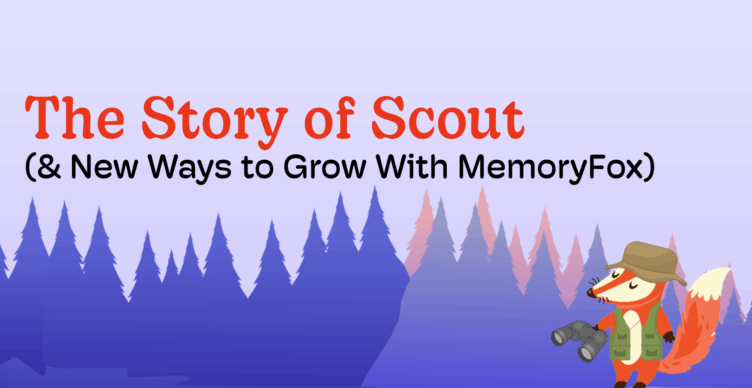Fundraising Tips, Storytelling Strategy
Telling Your Story: Aligning Mission with Grant Objectives
Both nonprofits and foundations are, at their core, storytellers. Every mission statement, funding priority, and impact report reflects a larger narrative about the change we want to see in the world. Effective storytelling in the nonprofit space begins with a “yes, and” mindset—one that amplifies authenticity, celebrates community voice, and invites partners to co-create impact.
For grant professionals, storytelling isn’t just a communications tool—it’s a strategy for alignment with funders. The most successful proposals don’t just check compliance boxes; they weave your organization’s mission into the funder’s ongoing story of change. Ultimately, as Thompson Grants emphasizes, understanding a grantmaker’s intent and aligning your goals accordingly is the cornerstone of effective grant management and stewardship.
This article explores how to align your nonprofit’s narrative with a funder’s objectives to build trust, credibility, and connection. Ultimately, you’ll learn how ethical, mission-centered storytelling can elevate both your funding outcomes and your community relationships.
1. Determine the Funder’s Story and Objectives
Before you write a single sentence, step back and ask: What story is this foundation trying to tell through its grantmaking? Treat the grant guidelines as a story prompt. Each section—from eligibility criteria to impact goals—offers insight into how your work might become the next logical chapter in the funder’s narrative.
To begin, think in storytelling terms:
- Characters: Who are the funder’s key focus populations?
- Plot: What problems are they working to solve, and how do they define success?
- Ending: What long-term impact do they envision—and how does your mission bring them closer to it?
Once you’ve established those details, look past the application itself. Dive into annual reports, press releases, and profiles of previously funded partners. You’ll often find subtle “narrative clues” in how they describe success stories. Aligning your mission framing with their established narrative shows that you understand their priorities and share their vision for impact.
It’s also critical to back your alignment with credible data. Review your compliance and financial documentation, including Single Audit requirements, to ensure your organization’s credibility. Reliable financial reporting strengthens your case for partnership and underscores your readiness for stewardship.
2. Use Strength-Based Messaging to Frame Your Mission
The era of “deficit-based” storytelling—focusing on what communities lack—is fading. Today’s most effective nonprofits tell stories that center on strengths, aspirations and resilience.
Deficit-based language (“at-risk youth,” “the poor,” “poverty-stricken”) unintentionally positions people as passive. Strength-based messaging, by contrast, uses empowering, active language such as “students pursuing college dreams” or “families navigating housing transitions.” This shift isn’t just semantics—it reflects a deeper respect for the dignity of the communities you serve. It also aligns with modern philanthropy’s move toward ethical storytelling.
When it comes to grantmaking, organizations that adopt strength-based language invite funders to join in a story of shared empowerment rather than rescue. This approach signals partnership readiness—showing that your nonprofit doesn’t just seek funding, but seeks to advance a vision of progress together and believes in your community’s future.
3. Prove Impact with Authentic, Community-Driven Stories
Grant reports often highlight metrics, such as meals served, homes built, hours volunteered. But while data measures reach, stories measure resonance.
In other words, storytelling translates numbers into emotionally-compelling lived experiences. It’s what helps a funder see why your work matters. For example, instead of just saying, “We served 500 meals last month,” you might add: “One of them went to Sarah, a single mother who told us, ‘This meal meant my kids didn’t go to bed hungry.’”
Consider these principles for storytelling that proves impact:
- Show, don’t tell. Choose vivid testimonials that bring your data to life, like the example mentioned above.
- Feature diverse voices. Include quotes and perspectives from participants, staff, volunteers, and board members to convey organizational depth.
- Embed stories in your reporting. Pair a key metric with one short narrative for every major outcome.
Collecting and reporting on stories in a timely manner can be challenging. However, Platforms like MemoryFox make it easier for nonprofits to collect, organize, and share authentic, community-driven content without losing control over narrative integrity.
4. Build Funder Trust Through Ethical Story Collection
Ethical storytelling is more than a communications best practice—it’s a trust-building strategy. According to Meyer Partners, “60% of donors believe nonprofits that use storytelling effectively are more transparent.”
Foundations increasingly evaluate how nonprofits handle consent, transparency, and narrative agency when collecting and sharing stories. Unfortunately, many organizations face what experts call a “consent gap”—a lack of clear processes for how stories are gathered, approved, and used.
Closing that gap demonstrates organizational maturity and reduces reputational risk. An ethical storytelling process should include:
- Transparency: Clearly explain how and where stories will be used.
- Agency: Give storytellers the chance to review and approve their final stories, with the ability to retract consent.
- Clarity: Use plain language in consent forms so everyone understands what they’re agreeing to.
According to MemoryFox’s guide to sharing sensitive stories, this kind of process not only protects participants but also reassures funders that your organization values community well-being as much as mission outcomes.
Furthermore, ethical storytelling is a form of governance from a risk management perspective—it signals your organization’s foresight, accountability, and respect for long-term relationships. When funders see that you safeguard dignity as diligently as data, you become a trusted partner for sustainable impact.
Conclusion
Aligning your mission with grant objectives doesn’t mean changing your story—it means telling it more clearly, authentically, and ethically. When you connect your narrative to a funder’s goals, use strength-based language, and demonstrate impact through community voices, you create a powerful case for investment.
At the heart of it all is trust. The stories you tell—and how you tell them—reflect the integrity of your mission. Ethical storytelling isn’t just good practice; it’s the bridge between vision and funding.

About the Author
Erin Murphy
Vice President of Marketing, Thompson Grants
Erin Murphy, MBA, is the Vice President of Marketing at Thompson Grants, where she leads strategic initiatives to expand the organization’s reach and impact. She leads initiatives that connect grant professionals with expert guidance, training, and tools designed to simplify compliance and strengthen funding strategies. Erin combines her background in marketing with a passion for supporting nonprofits, governments, and institutions as they navigate the complex world of grants management.




